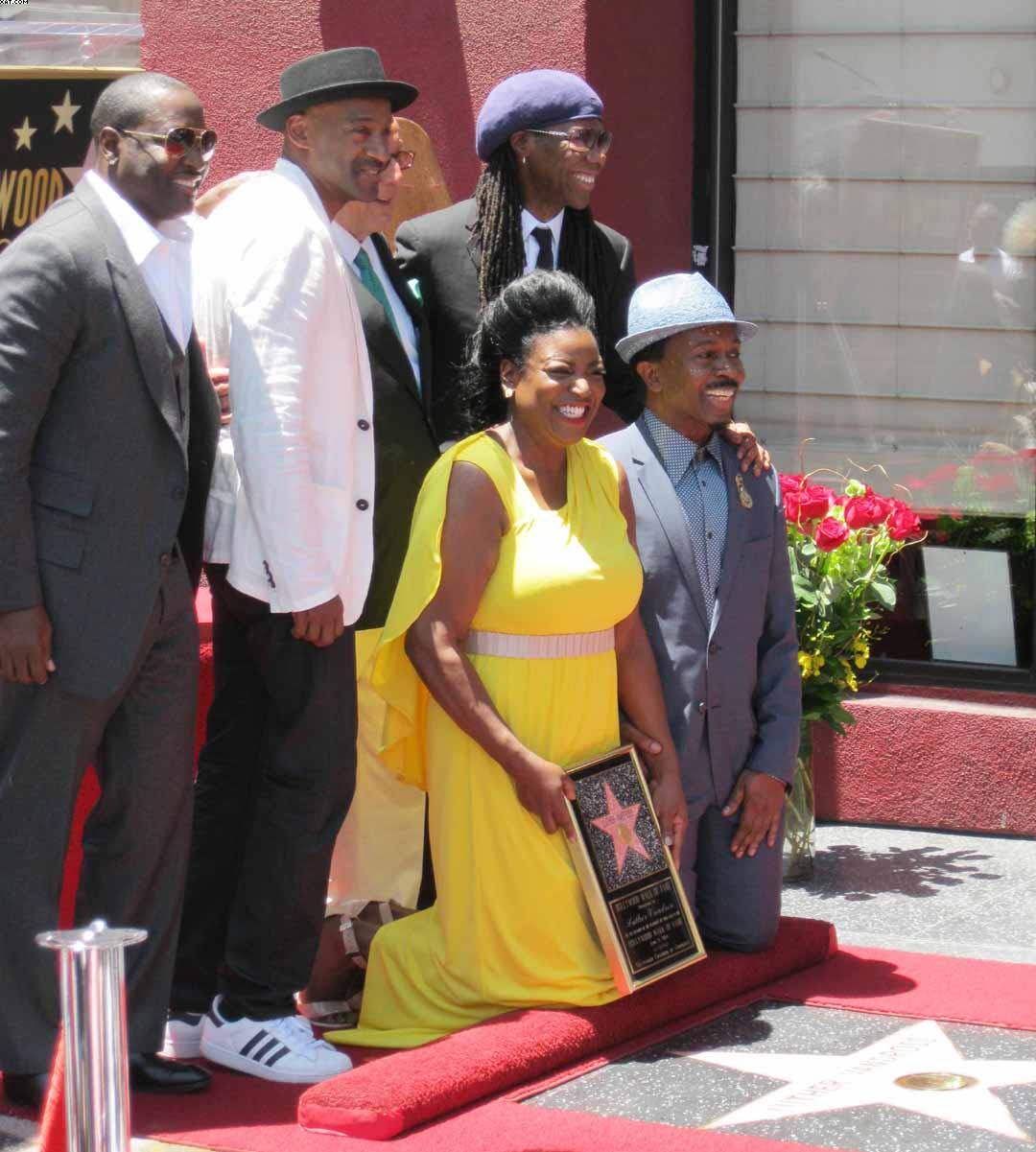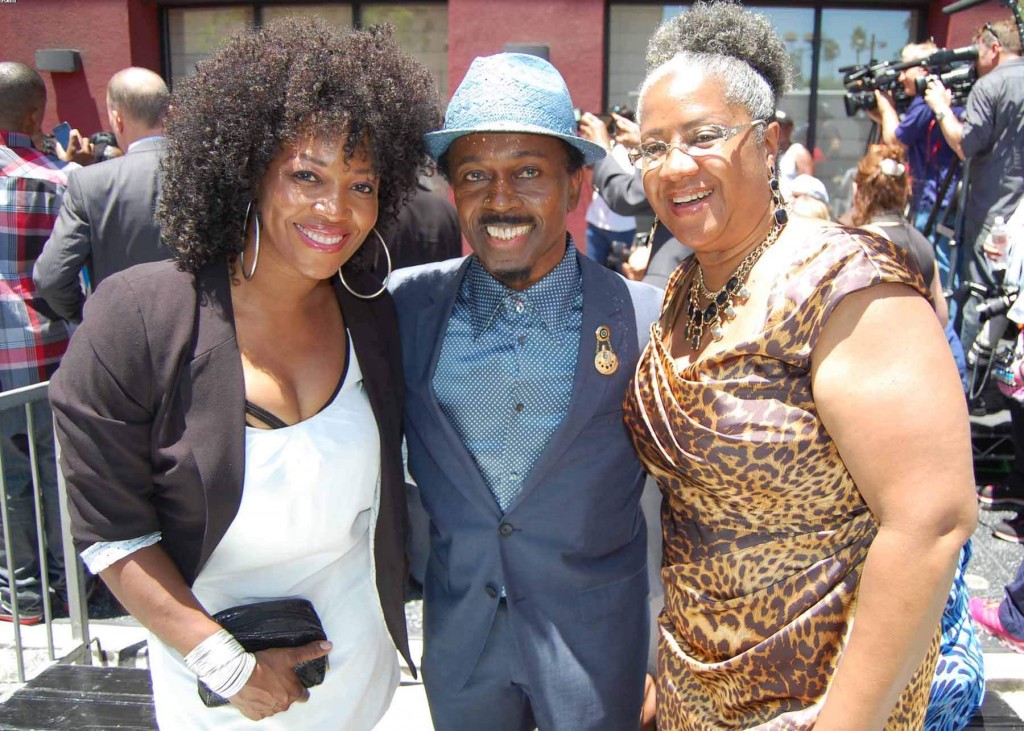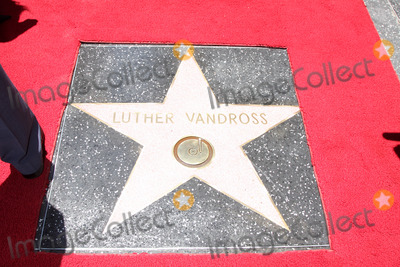| Author | Message |
Luther Vandross - Hollywood Walk Of Fame I saw this on Jill Scott's FB page and thought I'd share the news.
His day has come and you're invited!
I knew from the start that I loved you with all my heart. | |
- E-mail - orgNote -  Report post to moderator Report post to moderator |
Thanks for posting this. | |
- E-mail - orgNote -  Report post to moderator Report post to moderator |
“There are a lot of trumpeters who play with a lot technique, and there are a lot of singers who can riff all over the place,” longtime collaborator Marcus Miller once said of Vandross. “But Luther and Miles (Davis), they could play all the notes, but they just played the right notes. They found the notes that would affect you, emotionally.”
“I love Stevie Wonder and I love Teddy Pendergrass and I love Donny Hathaway and Tony Bennett for that matter,” Vandross said in a 1982 interview, “but they were not the ones to arouse my musical libido. It was those nights with the earphones listening to Aretha (Franklin) sing ‘Ain’t No Way’ and listening to Dionne Warwick sing ‘People’ and listening to Diana Ross sing ‘Reflections.’ It was those nights that just knocked me down. I emulated these people. And as a result of having a lot of female singers as my idols, my sensitivity level is much different than a lot of other guys singing.” | |
- E-mail - orgNote -  Report post to moderator Report post to moderator |
| |
- E-mail - orgNote -  Report post to moderator Report post to moderator |
Singer Alfonso "Fonzi" Thorton (L) and Seveda Williams, a niece of singer Luther Vandross participate in an unveiling ceremony honoring Vandross with a posthumous star on the Hollywood Walk of Fame in Los Angeles on June 3, 2014. Seveda Williams, a niece of singer Luther Vandross holds a replica plaque during an unveiling ceremony honoring Vandross with a posthumous star on the Hollywood Walk of Fame in Los Angeles on June 3, 2014. UPI/Jim Ruymen
 Seveda Williams, a niece of singer Luther Vandross participates in an unveiling ceremony honoring Vandross with a posthumous star on the Hollywood Walk of Fame in Los Angeles on June 3, 2014. UPI/Jim Ruymen
 Seveda Williams, a niece of singer Luther Vandross participates in an unveiling ceremony honoring Vandross with a posthumous star on the Hollywood Walk of Fame in Los Angeles on June 3, 2014. UPI/Jim Ruymen
 .
 Music producer Nile Rodgers (R) and Seveda Williams, a niece of singer Luther Vandross participate in an unveiling ceremony honoring Vandross with a posthumous star on the Hollywood Walk of Fame in Los Angeles on June 3, 2014. UPI/Jim Ruymen
 .
 Singer Johnny Gill, jazz composer Marcus Miller, music executive Clive Davis, Luther Vandross' niece Seveda Williams, music producer Nile Rodgers and singer Alfonso 'Fonzi' Thornton (L-R) participate in an unveiling ceremony honoring Vandross with a posthumous star on the Hollywood Walk of Fame in Los Angeles on June 3, 2014. UPI/Jim Ruymen
 Singer Alfonso "Fonzi" Thorton (L) and Seveda Williams, a niece of singer Luther Vandross participate in an unveiling ceremony honoring Vandross with a posthumous star on the Hollywood Walk of Fame in Los Angeles on June 3, 2014. UPI/Jim Ruymen
 Singer Alfonso "Fonzi" Thorton (R) and Seveda Williams, a niece of singer Luther Vandross participate in an unveiling ceremony honoring Vandross with a posthumous star on the Hollywood Walk of Fame in Los Angeles on June 3, 2014. UPI/Jim Ruymen
 Singer Alfonso "Fonzi" Thorton (L) and Seveda Williams, a niece of singer Luther Vandross participate in an unveiling ceremony honoring Vandross with a posthumous star on the Hollywood Walk of Fame in Los Angeles on June 3, 2014. UPI/Jim Ruymen
 Flowers and a photograph of singer Luther Vandros are on display during an unveiling ceremony honoring Vandross with a posthumous star on the Hollywood Walk of Fame in Los Angeles on June 3, 2014. UPI/Jim Ruymen
 Singer Alfonso "Fonzi" Thorton (R) and Seveda Williams, a niece of singer Luther Vandross participate in an unveiling ceremony honoring Vandross with a posthumous star on the Hollywood Walk of Fame in Los Angeles on June 3, 2014. UPI/Jim Ruymen
 Singer Alfonso "Fonzi" Thorton (L) and Seveda Williams, a niece of singer Luther Vandross participate in an unveiling ceremony honoring Vandross with a posthumous star on the Hollywood Walk of Fame in Los Angeles on June 3, 2014. UPI/Jim Ruymen
 Singer Alfonso "Fonzi" Thorton, Seveda Williams, a niece of singer Luther Vandross and jazz composer Marcus Miller (L-R) participate in an unveiling ceremony honoring Vandross with a posthumous star on the Hollywood Walk of Fame in Los Angeles on June 3, 2014. UPI/Jim Ruymen
| |
- E-mail - orgNote -  Report post to moderator Report post to moderator |
 New topic
New topic Printable
Printable






